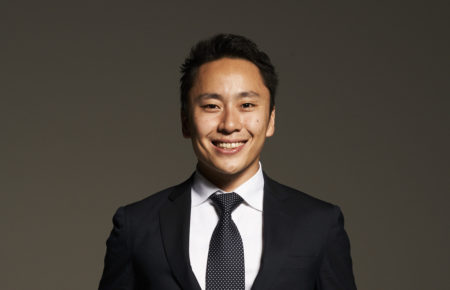
Interview with Olympic Innovator – Yuki Ota, President of the Japanese Fencing Federation and Vice President of the International Fencing Federation.
1. How important is it to innovate the way fencing is understood, consumed and engaged with by new and existing fans?
Fencing has a long & historic heritage, coming from the days of combat in the conquests of war and battle to the exciting and engaging sport it is today. The way sport in general was consumed in the past was very structured. There were clubs, federations, universities and other entities that were the stewards of the sport. This was the way ‘fencing was produced’ if one were to think of it as a product. Today, other intermediaries in sport are emerging and the way the fencing product is being produced is at the hands of millions of creators who are supported by digital capabilities to tell new stories. As the President of a national governing body of fencing, I am but one producer of fencing. With this mindset, it becomes straightforward to think about my place in an ecosystem rather than at the top of one. At the Japanese Fencing Federation, we are always looking for new ways to extend the fencing product, with all of its marvelous components (from athletes, to events, to coaches, to school clinics, etc) to a wider audience. This is the meaning of innovation for us.
2. One such innovation is the Fencing Visualized project you have been working on. Could you tell us more about it?
One of the main challenges we have with the fencing product today is that the spectator in the venue or on the screen cannot follow the speed of the weapons. Fencing athletes are known to be explosive in acceleration making movements very quick for the naked eye to follow. Additionally, the weapons become an extension of the athletes and are conducted at a speed that is also difficult for viewers to comprehend. The Fencing Visualized project is an attempt at using motion capture technology, pattern recognition, and visualization to solve this latter challenge. Put together these three technologies give current and future audiences a new way to understand and engage with our sport, specifically through the digital intermediary. You can see a short video about it here. It is easy to see what the appeal is for our sport to adopt such novel solutions.
3. Can you tell us more about the Fencing Visualized project and the main considerations for technology solutions in sports?
The sport of fencing, like many other sports, is governed by rules and regulations that make it a standardized sport worldwide. The sport is effectively codified and distributed globally through development manuals, coaching courses, referee regulations, event rules, etc. This is the one of the main responsibilities of an international federation, like the International Fencing Federation. For any new change to happen, there are important steps to take including discussing with the main stakeholders, such as athletes, broadcasters, referees, coaches, etc, to ensure that the integrity and fairness of the sport is maintained. Throughout the last few years of the project since it was initially launched in 2014, we have been strongly advocating for a co-constructed solution, one that is appealing to all stakeholders. Importantly, to test this solution we need to do this incrementally in different events, starting from local events, to regional and then global, ultimately arriving at the Olympic Games.
4. What is next for you and the Fencing Visualized project?
My dream is to see the Fencing Visualized solution adopted in the Olympic Games as the standard for how our sport is presented in front of TV viewers, and then seeking to create solutions that could be useful for gamification, talent identification and many other things. From my own perspective, my objective is to continue supporting the leadership at the International Fencing Federation, headed by its President Alisher Usmanov, and to prepare Team Japan for the Olympic Games next year. I’m also preparing a personal project to take my commitment to support athletes, both competing and retired, to the next level. I hope to share more about this project very soon!



